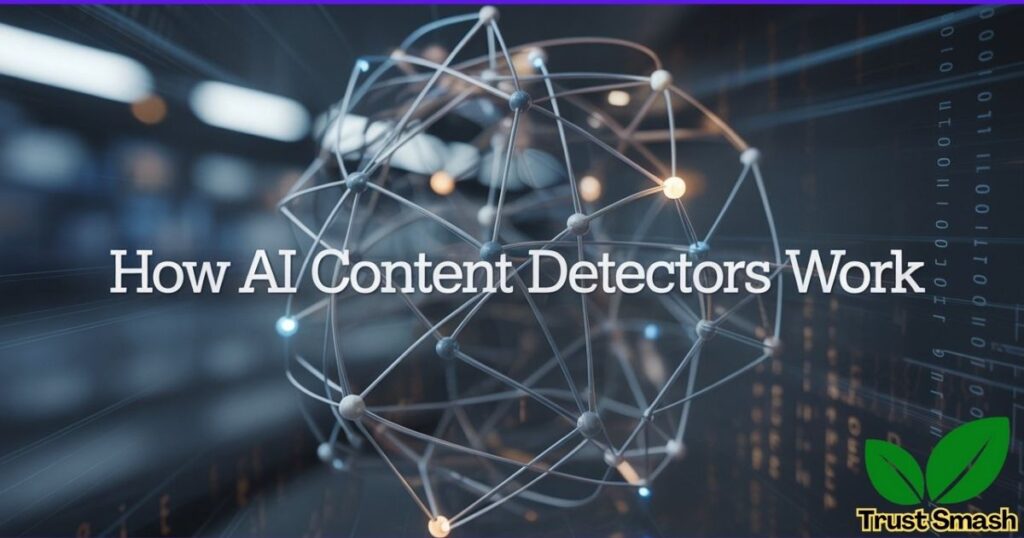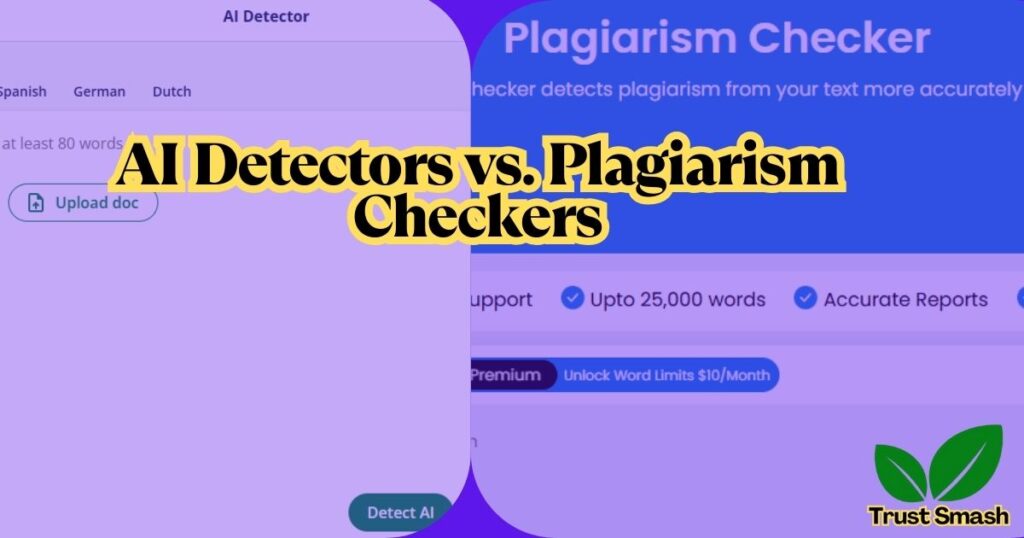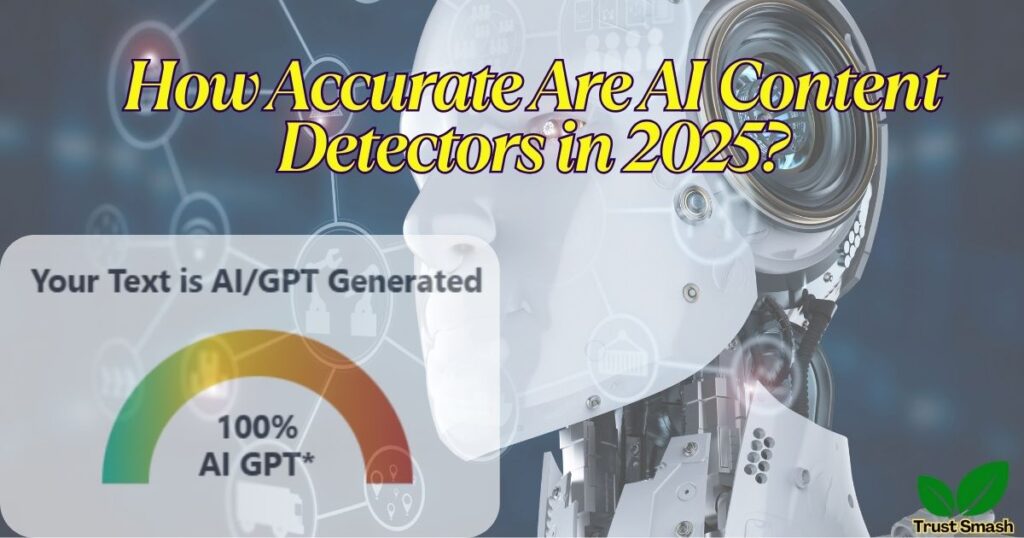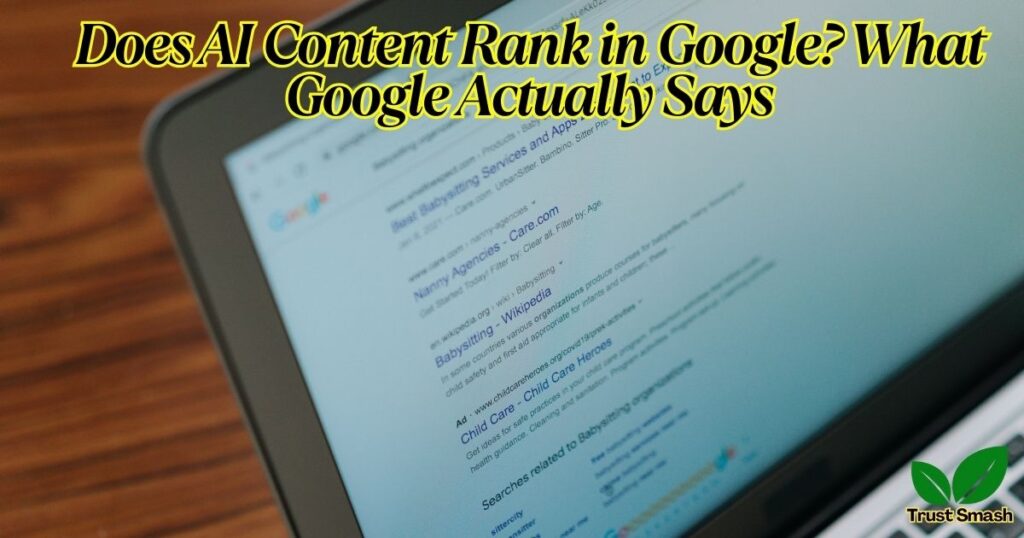Understanding how does AI detection work is key in today’s digital world. When you write or read something online, there’s a growing need to know if it’s human-written or created by machines. How does AI detection work is a question more people are asking as content generated by artificial intelligence becomes more common. AI content detectors are tools that help with this. They scan text using smart systems to spot patterns typical of AI-generated content. These systems look at structure, tone, and style to detect AI writing.
The goal is to ensure content authenticity by comparing writing features with known human and machine samples. As technology grows, learning how does AI detection work helps protect both your work and your trust in online information.
What Are AI Content Detectors and Why Do They Matter?

AI content detectors are tools that look at your text and decide if it was written by a human or an AI. These tools use natural language processing and machine learning in content detection to analyze patterns in writing. They measure how “robotic” your sentences sound and how predictable the structure is.
Why does it matter? Because AI-generated content may not always follow Google’s rules. Some websites want real human writing for content authenticity. In schools and journalism, using AI-written articles without disclosure can hurt academic integrity and trust. So being able to detect AI writing is more important than ever.
How Do AI Content Detectors Work?

AI detection tools work in smart ways. They use models trained with both human and AI texts. These models check for things like predictability, structure, and how well the text flows. This process is called AI content analysis. It’s not just one thing—it’s a mix of many small checks.
The tools look at how complex your writing is using perplexity in text. They also see how varied your sentence length is using burstiness in writing. If everything sounds too even or too perfect, the tool thinks it’s AI. Tools like Originality.ai or Surfer AI Humanizer use classifier models, semantic embeddings, and other NLP techniques to make that judgment.
AI Detectors vs. Plagiarism Checkers: What’s the Difference?

Many people think AI detection algorithms and plagiarism detection are the same. But they are not. A plagiarism tool checks if you copied from someone else. It compares your text to what’s already online. On the other hand, AI content detectors check how the text was created, not where it came from.
Plagiarism detection vs AI detection is like comparing a security guard to a DNA test. One looks for matching sources. The other looks for the style and pattern of creation. That’s why both are useful in different ways.
How Accurate Are AI Content Detectors in 2025?

In 2025, AI detection tools have become smarter. But they are still not perfect. Tools like Originality.ai and GPTZero claim high accuracy, but there are still false results. Some human content gets marked as AI and some GPT-generated content passes as human.
This happens because language models like ChatGPT are getting better at sounding human. Also, content with high perplexity and good sentence variation can trick detectors. So while detection has improved, AI content quality still makes accurate detection hard.
| AI Detector Tool | Accuracy (2025) | Free/Paid |
| Originality.ai | 94% | Paid |
| GPTZero | 85% | Free |
| Winston AI | 88% | Paid |
| Content at Scale | 82% | Paid |
Real-World Use Cases of AI Detection Tools

Schools use AI-generated text checkers to maintain academic integrity. They want to make sure students write their own essays. News companies use these tools to check that writers don’t secretly use AI. Marketers use AI content detectors to make sure their brand voice sounds human.
Even government and healthcare sectors use AI detection tools for YMYL content (Your Money or Your Life). These areas need high trust and real expertise. Fake or robotic content can cause serious harm. That’s why these tools are more common today.
How to Bypass AI Content Detectors (Ethically & Unethically Explained)

You can bypass AI detectors in ethical ways. One method is to rewrite the content using your own words. Another way is to use AI humanizer tools like Surfer AI Humanizer. These tools change sentence structure, add slang, or adjust tone. This makes the text more human.
Unethical ways include using tools that spin or scramble words. Some people even copy the AI content and run it through many rewriters. These methods may fool detectors, but they often hurt AI content quality and SEO. It’s better to combine text generation with human editing.
Top AI Content Detection Tools [Free & Paid]
![Top AI Content Detection Tools [Free & Paid]](https://trustsmash.com/wp-content/uploads/2025/05/top-ai-content-detection-tools-free-and-paid-1024x538.jpg)
There are many AI detection tools today. Some are free, others offer more power but cost money. Here’s a quick overview:
| Tool Name | Key Feature | Free/Paid |
| Originality.ai | Detects AI and plagiarism | Paid |
| GPTZero | Checks burstiness & perplexity | Free |
| Copyleaks AI Tool | Uses semantic embeddings | Free |
| Winston AI | Built for schools and publishers | Paid |
| Content at Scale | Designed for marketers & long content | Paid |
These tools look at sentence structure analysis, predictive modeling, and semantic similarity to find AI-written content. Choose the one that fits your needs.
How to Make AI-Generated Content Undetectable

If you want to make AI-generated content look human, focus on humanizing AI content. Add emotion, stories, or opinions. Use sentence variation and write like you speak. This makes your content more natural.
Also, increase burstiness in writing by mixing long and short sentences. Reduce the use of predictable phrases. Tools like Surfer AI Humanizer can help. But always double-check the content yourself. Even AI needs a human touch to sound real.
Does AI Content Rank in Google? What Google Actually Says

Yes, AI content can rank on Google—but only if it is helpful. Google has said many times that what matters is the value of the content, not who wrote it. The Google helpful content update supports useful articles whether written by humans or AI.
But if the content is just fluff, it won’t do well. Google uses content scoring, human score, and NLP techniques to decide what’s useful. So if you’re using AI writing tools, make sure your content still serves the reader.
Final Thoughts: Is AI Detection the Future or a Flawed System?

AI detectors are smart, but they are not perfect. They are good at catching patterns, but not great at knowing intent. In the future, they might get better with stronger supervised learning and unsupervised learning models.
But for now, they are best used as guides, not judges. If you care about content authenticity, it’s smart to combine AI content analysis with human editing. That’s the best way to stay ahead in this fast-changing world.
FAQs

How does an AI detector work?
An AI detector uses classifier models, semantic embeddings, and checks like perplexity and burstiness to analyze if content was written by a human or AI.
How accurate are the AI detectors?
Accuracy varies by tool, but top AI detection tools like Originality.ai can reach up to 94%, though false positives still occur.
How to trick AI content detectors?
You can trick detectors by rewriting text, adding sentence variation, or using AI humanizer tools, but it doesn’t always work reliably.
How does Zero GPT detect AI?
Zero GPT examines text generation patterns using NLP techniques like perplexity and burstiness to flag potential GPT-generated content.
How to make ChatGPT undetectable?
Rewrite responses using your tone, include real-life details, and adjust structure to increase content authenticity and reduce predictability.
Can GPT-4 pass AI detection?
Yes, GPT-4 can sometimes pass detection if the output is edited, but unedited content is often flagged by advanced tools.
How to trick AI content detectors?
Combine humanizing AI content methods like tone changes, diverse phrasing, and structural edits to reduce detection chances—but results may vary.